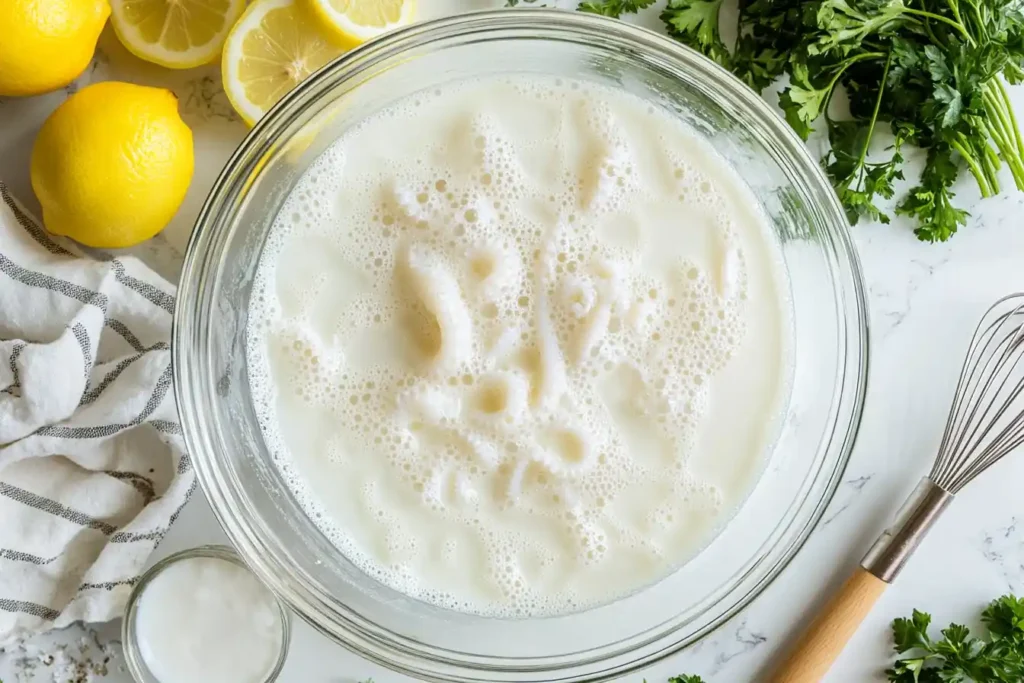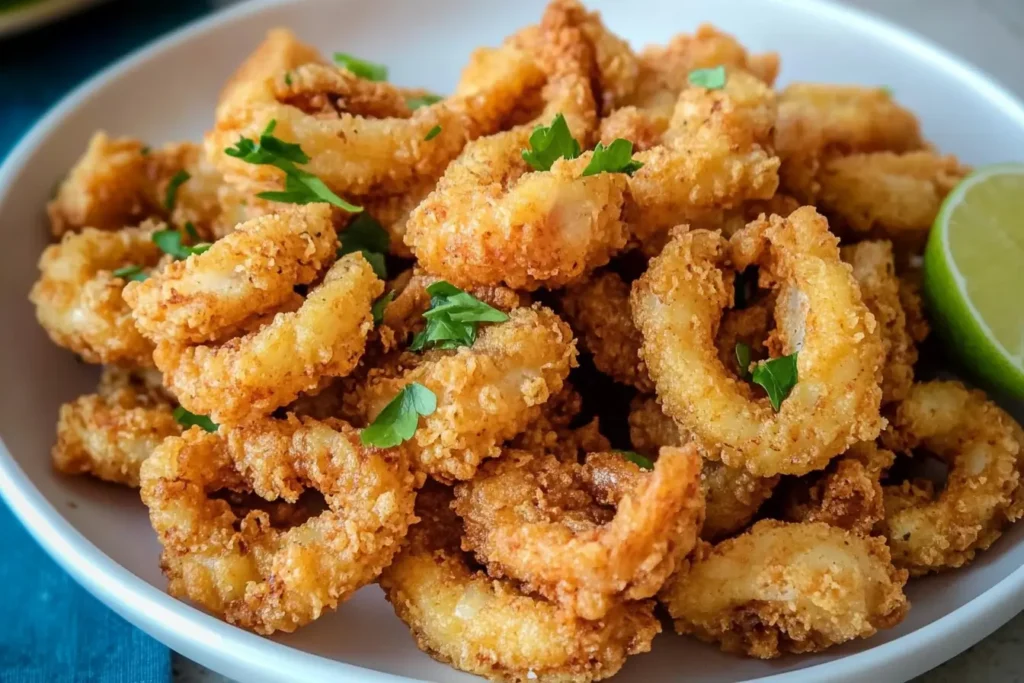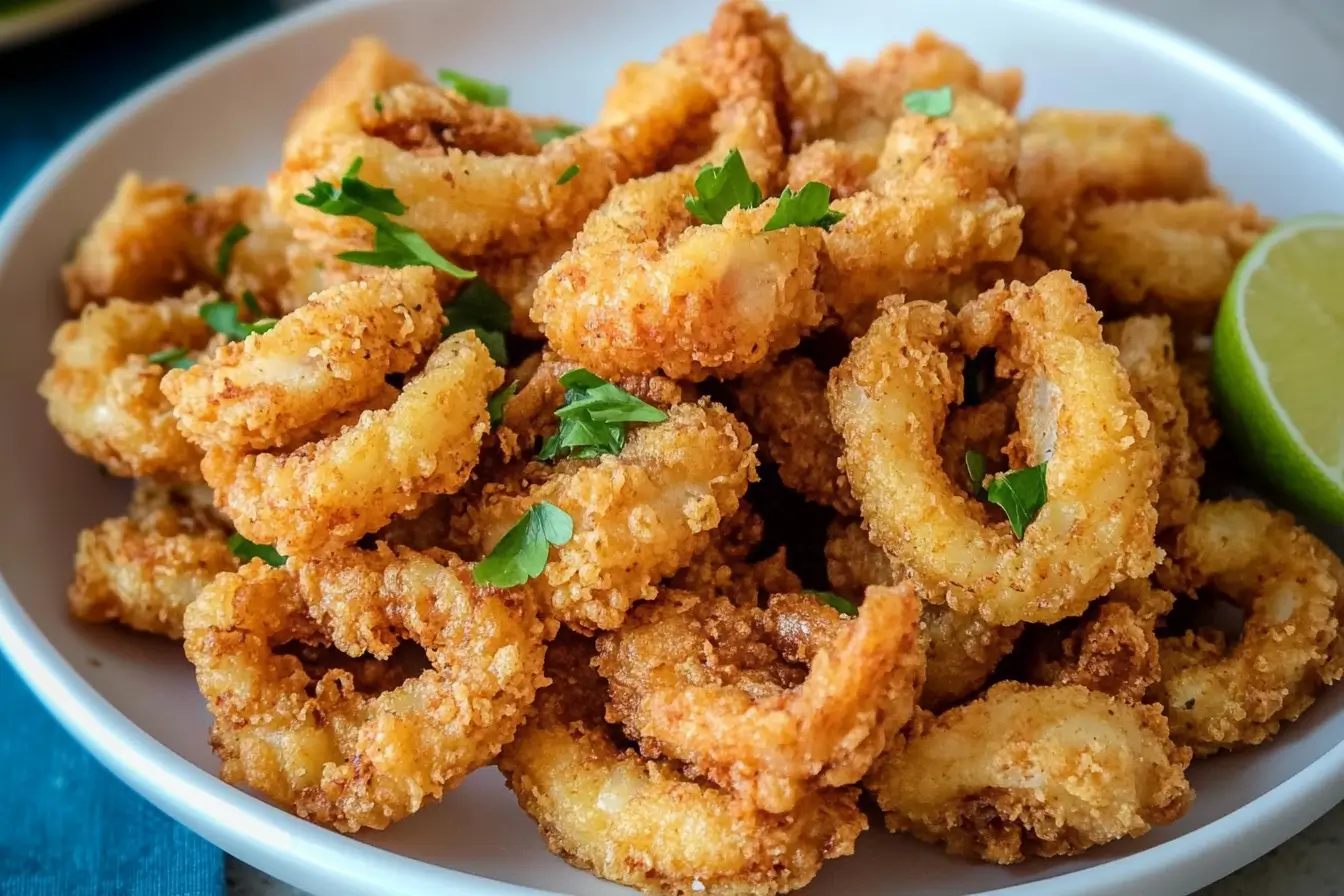Calamari is a delightful dish enjoyed worldwide, but it can be tricky to prepare perfectly. Have you ever wondered why soaking calamari in milk is a go-to method for making it tender and delicious? This article will unravel the science behind this technique, provide a step-by-step guide, and share expert tips to elevate your calamari-cooking game. From understanding what makes calamari chewy to exploring how milk transforms its texture, we’ve got you covered.
Why Do You Soak Calamari in Milk?
Calamari is prized for its flavor and texture, but without proper prep, it can turn rubbery. Soaking it in milk is a time-tested trick to keep it tender and flavorful. Milk’s enzymes and lactic acid break down tough fibers without overpowering the squid’s natural taste, making it a favorite method among chefs and home cooks. For more tips, check out this detailed guide.
Importance of Soaking Calamari
Soaking makes calamari easier to cook and helps reduce any strong fishy odor, ensuring each bite stays tender and delicious.
How Milk Tenderizes Calamari
Milk’s enzymes and lactic acid soften the squid’s proteins naturally. Unlike acidic marinades, milk tenderizes without drastically altering the squid’s delicate flavor.
Chemical Properties of Milk
Casein in milk loosens muscle fibers, while lactic acid gently breaks down connective tissue, leading to a softer, more pleasant bite.
Enzymatic and Lactic Acid Effects
At the molecular level, enzymes and lactic acid work together to prevent the calamari from becoming tough when cooked, creating the perfect balance of firmness and tenderness.
.Comparing Milk to Other Tenderizing Methods
Other methods, like buttermilk, lemon juice, or vinegar, can tenderize calamari but may impact flavor or risk over-tenderizing. Milk remains the gentlest option.
Pros and Cons
-
Milk: Gentle, neutral, maintains flavor.
-
Buttermilk: Effective, but can add tangy notes.
-
Acidic Marinades: Tenderize quickly but risk toughness or altered taste.
Flavor Impacts of Soaking in Milk
Milk tenderizes without leaving a dairy aftertaste. Instead, it enhances the squid’s sweet, briny flavor—perfect for grilled, sautéed, or fried calamari dishes

Step-by-Step Guide to Soaking Calamari in Milk
Preparing Calamari for Soaking
it’s crucial to prepare the squid properly to ensure it’s clean, fresh, and ready to absorb the milk’s tenderizing magic. Proper preparation is the foundation of achieving tender and flavorful calamari.
Cleaning and Slicing
Rinse calamari under cold water, remove the head and innards, peel the skin if desired, and slice into rings. Clean squid absorbs milk better for tender texture.
Checking Freshness
Fresh calamari should smell mildly briny and feel firm. Avoid any strong odors or sliminess for the best soaking results.
Soaking Techniques
Place cleaned squid in a clean bowl, cover with fresh milk, and soak for 30 minutes to 1 hour. Avoid over-soaking to maintain the perfect texture.
Tips for Achieving Optimal Texture
- Use whole milk for a richer tenderizing effect, though low-fat milk will work too.
- Keep the calamari in the refrigerator while it soaks to maintain its freshness.
- Stir the milk occasionally to ensure all pieces are evenly soaked.
Common Mistakes to Avoid When Soaking Calamari in Milk
Over-Soaking
Too much time in milk makes calamari mushy. Stick to the recommended 30 minutes to 1 hour.
Using the Wrong Milk
Always use fresh, plain milk. Expired or flavored varieties can ruin the squid’s natural taste.
Finding the Right Balance
Soaking tenderizes calamari, but timing is key—enough to soften, not enough to break down the texture.

Best Cooking Methods for Milk-Soaked Calamari
After soaking, proper cooking brings out the calamari’s tenderness. For more tips, see our full guide on how to cook tender calamari.
Frying and Sautéing
For crispy calamari, coat rings in seasoned flour and fry at 350°F until golden. Prefer a lighter option? Sauté quickly in olive oil with garlic and herbs—just 2–3 minutes to keep it tender.
Grilling for Smoky Flavor
Toss calamari with olive oil, lemon, and spices, then grill over high heat for a smoky, charred finish that complements its tenderness.
Popular Recipes
-
Fried Calamari with Dips: Serve with marinara, aioli, or tartar sauce plus a lemon wedge.
-
Grilled Calamari Salad: Layer grilled calamari over greens, cherry tomatoes, and cucumbers with a zesty vinaigrette for a fresh, light meal.

FAQs About Soaking Calamari in Milk
Why is milk better than water?
Milk’s enzymes and lactic acid tenderize calamari, while water lacks these properties.
Can I use plant-based milk?
Yes, but dairy milk is more effective. Choose unsweetened, unflavored plant-based options.
How long to soak?
30 minutes to 1 hour. Longer soaking can make it mushy.
Does it remove the fishy smell?
Yes, milk neutralizes strong odors while preserving fresh flavor.
What if I skip soaking?
Calamari may turn tough and chewy if you don’t soak it.
Risks of soaking too long?
Over-soaking softens calamari too much—stick to the timing.
Can I reuse the milk?
No, discard it after soaking—it absorbs odors and proteins.
Final Thoughts
Soaking calamari in milk tenderizes the meat and removes any fishy odor, resulting in seafood that’s tender, flavorful, and delicious. Unlike acidic marinades, milk gently preserves the squid’s natural texture. Now that you know the secret, try it out and experiment with your favorite recipes—you’ll be amazed at the difference! For inspiration on side dishes, check out what to serve with calamari steaks.

Milk-Soaked Crispy Fried Calamari
Ingredients
- 1 lb calamari rings about 450g
- 1 cup whole milk for soaking
- 1 cup all-purpose flour about 125g
- ½ cup cornstarch about 65g
- 1 teaspoon paprika
- 1 teaspoon garlic powder
- salt and black pepper to taste
- vegetable oil for frying
- fresh lemon wedges for serving
- chopped parsley optional, for garnish
Instructions
- Place calamari rings in a bowl of milk. Cover and refrigerate for 30 minutes to tenderize.
- In a separate bowl, mix flour, cornstarch, paprika, garlic powder, salt, and pepper.
- Heat vegetable oil in a deep skillet to 350°F (175°C).
- Remove calamari from milk, shake off excess, dredge in flour mixture, and fry in batches until golden and crispy (about 2–3 minutes).
- Drain calamari on paper towels.
- Sprinkle with chopped parsley if desired and serve with fresh lemon wedges.

